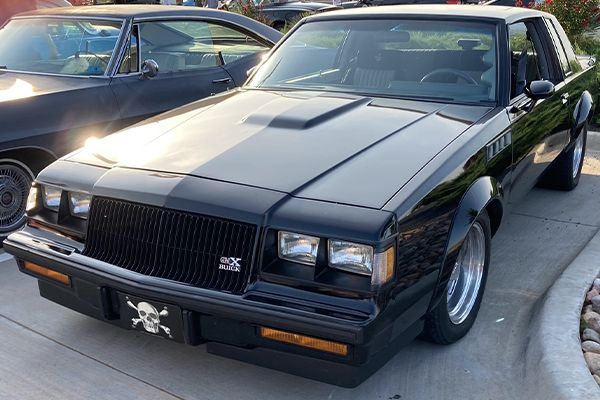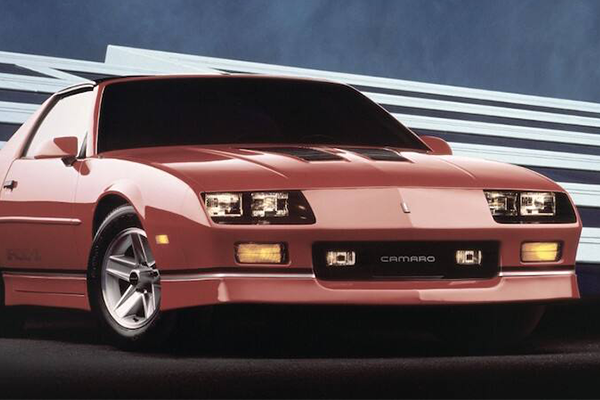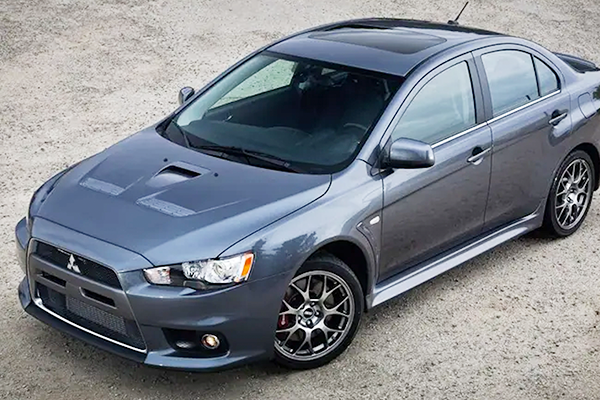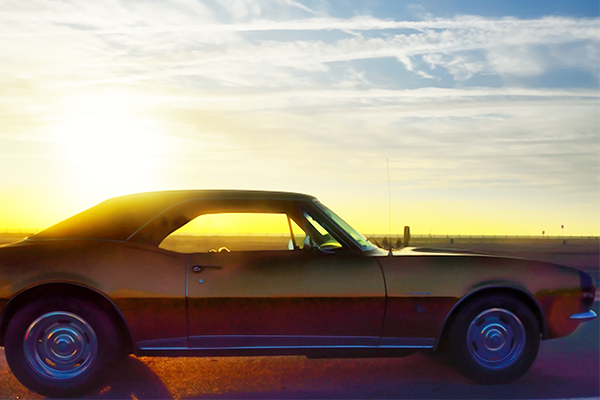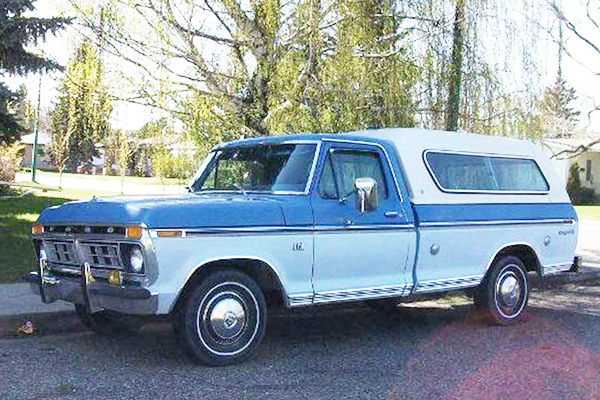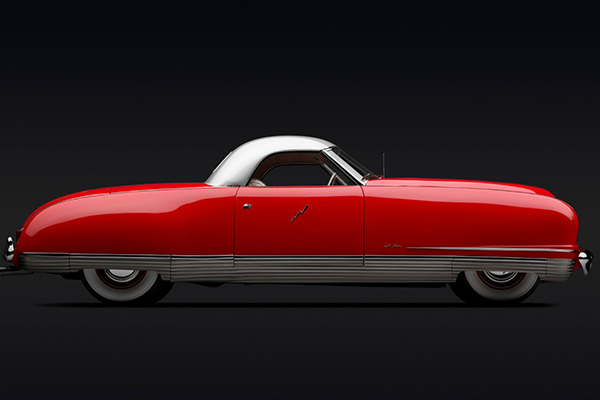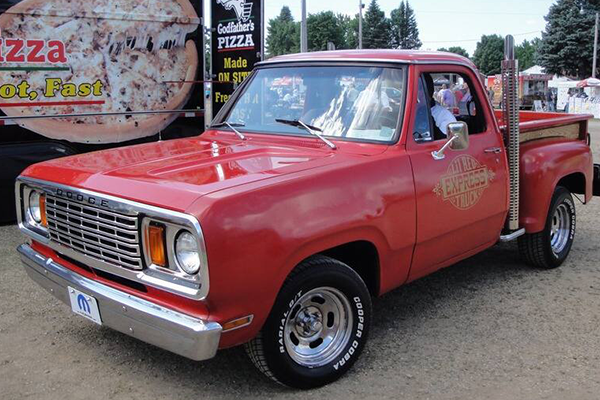From timeless icons to everyday essentials, Crucial Cars examines the vehicles we can’t live without. For this installment, we put the spotlight on AMC's entry in the Pony Car wars, the Javelin AMX.
AMC was late to the pony car game. They did have a stab at the market in the mid 60s with the Rambler Marlin—a car that was an "acquired taste" at best and was such a sales flop it never even made back the money spent on its tooling. There was also the Rambler Scrambler, a bog-standard Rambler American coupe with a monster engine, but the true pony car was yet to come for the Kenosha folks.
Largely overshadowed by the Chevrolet Camaro, Pontiac Firebird, and Ford Mustang, (and to a lesser degree the Dodge Challenger and Plymouth Barracuda), the AMC Javelin AMX was akin to RC Cola battling Coke and Pepsi. That doesn't mean it was a bad choice in the Pony car segment, (so-called because the Mustang is credited with starting this sporty segment back in 1964) far from it! The Javelin AMX was just a different flavor, and plenty of performance enthusiasts found it downright sweet.
A public debut
Debuting August 22, 1967 for the 1968 model year, the two-door, hardtop Javelin came on to the scene amidst the other "ponies" of its time. Priced around $2,500, the car was an innovator in many areas including safety. The Javelin had windshield posts that were "the first industry use of fiberglass safety padding." Inside, this car featured three-point seat belts and headrests for the front seats and dull trim to avoid glare.
For a two-seater, the Javelin offered decent space with enough head and legroom for passengers and a 10.2 cu. ft. trunk capacity. Javelins came with thin-shell bucket seats and a fully carpeted interior, while the SST model had additional appearance and comfort items that included reclining front seat backs (almost unheard of in the 60s and 70s, but Ramblers had reclining seats as far back as the 50s), simulated wood grained door panel trim, and a sports-style steering wheel. Its stiffer suspension also gave it a reputation for above-average handling.
Of course the manufacturers knew it had to look good, so they created what AMC called a "twin-venturi" look with recessed honeycomb grille and outboard-mounted headlamps. Matching turn signals were set into the bumper and there were air scoops on the long hood. The sloped windshield gave the Javelin an overall sporty look to compete with the other ponies in the market.
Speaking of ponies, this little car could get up and go with the base and more premium SST models. Standard engines were a 232 cu in (3.8 L) straight-6 or a 290 cu in (4.8 L) two-barrel carburetor V8. Optional was a 343 cu in (5.6 L) V8 in regular gasoline two-barrel, or high-compression, premium-fuel four-barrel versions.
In mid-1968, the new AMX 390 cu in (6.4 L) engine was offered as a "Go-package" option with a floor-mounted automatic or manual four-speed transmission. In an article from Concept Carz the Javelin's "impressive 315 hp (235 kW; 319 PS) and 425 pound force-feet (576 N·m) of torque could send the Javelin from zero to 60 miles per hour (97 km/h) in the seven-second range." This was enough to make the Javelin a serious contender in the muscle car world.
The 1969 model year saw minor changes including revised side striping, and altered grille with new bull's eye emblem, and a few trim upgrades. The interior received new door panels and upgraded carpeting. Instrumentation featured a 0–8,000 rpm tachometer that now matched the speedometer in style. Late model-year production received a cowl over the instrument panel directly in front of the driver.
The Javelin also made its racing debut in this model year when Kaplan Engineering (Ron Kaplan and Jim Jeffords) had been contracted by AMC to run two AMC Javelins in the SCCA’s Trans-Am series. For 1968, the initial drivers had been George Follmer (#1) and Peter Revson (#2). Revson was let go part way through the year after a disagreement with management. The team picked up Lothar Motschenbach for the next two races in Canada. The Javelin's racing career started off, and continued to go well with various drivers taking the wheel and the victories.
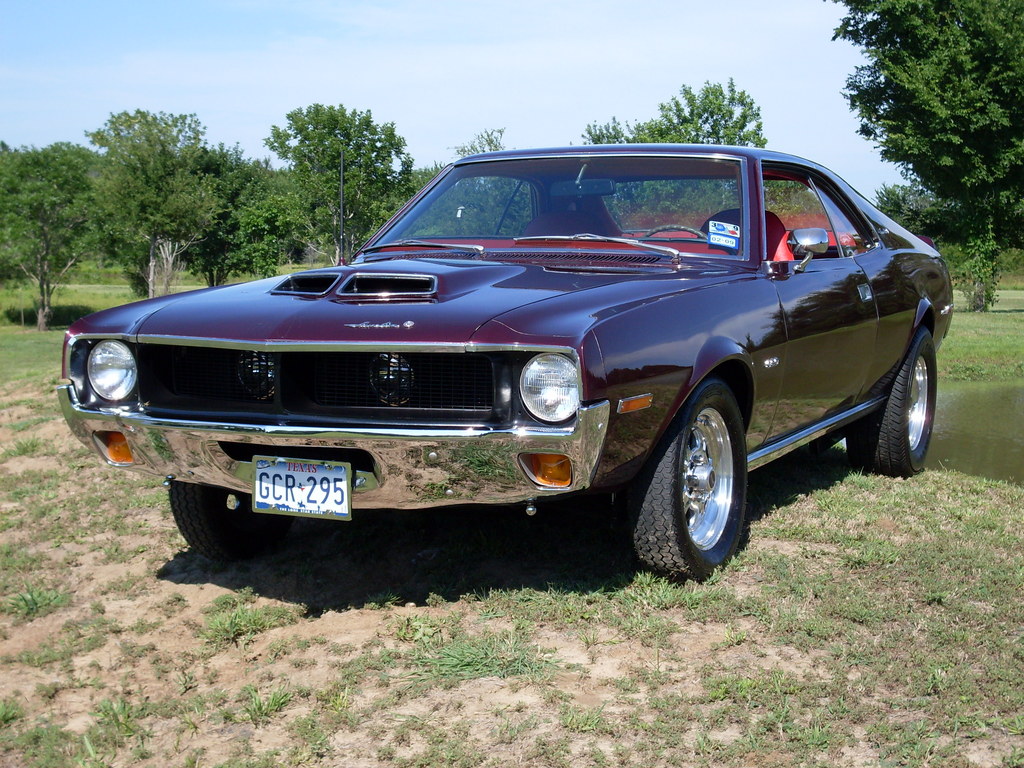
1970 AMC Javelin SST, Source | Car Domain
The remodel
Things changed big time for the Javelin in 1970 with a new front-end design with a wide "twin-venturi" front grille incorporating the headlamps and a longer hood. It also had a new rear end with full-width taillamps and a single center-mounted backup light. This was a one-year-only design. The 1970 AMC Javelins also introduced Corning's new safety glass, which was thinner and lighter than standard laminated windshields.
The engine lineup for 1970 was changed with the introduction of two new V8 engines: a base 304 cu in (5.0 L) and an optional 360 cu in (5.9 L) to replace the 290 and the 343 versions. The top optional 390 cu in (6.4 L) continued, but it was upgraded with new cylinder heads featuring 51 cc combustion chambers, increasing power to 325 hp (242 kW).
The interior for 1970 was also a one-year design featuring a broad dashboard (wood grained on SST models), new center console, revised interior door panel trim, and tall "clamshell" bucket seats with integral headrests available in vinyl, corduroy, or optional leather upholstery. A new two-spoke steering wheel was available with a "Rim Blow" horn.
The racing career of the Javelin continued in 1970, but now was under the Penske Racing team. The team included former Shelby chassis engineer Chuck Cantwell and a clockwork pit crew. The two-car Javelin effort provided the Bud Moore Ford Boss 302 Mustangs their "closest competition."AMC finished in second place in the Over 2-liter class of the 1970 series. The strong participation by AMC in Trans-Am and drag racing served to enhance its image, and notable was that its motorsports efforts were achieved on a shoestring budget with the automaker racking up a respectable number of points against its giant competitors.
Second Generation: 1971-1974
The AMC Javelin was restyled for the 1971 model year and was longer, lower, wider, and heavier than its predecessor. Actual power output remained the same, but the U.S. automobile industry followed the SAE horsepower rating method that changed from "gross" in 1971 and prior years to "net" in 1972 and later years.
The redesign featured a ton of modifications including an integral roof spoiler and sculpted fender bulges designed to fit the oversize racing tires. This redesign also came with an intricate, injection molded grille. Inside, the dashboard was asymmetrical and the instrument gauges gave the Javelin a cockpit feel.
AMC offered a choice of engines and transmissions including a 232 cu in (3.8 L) I6 and a four-barrel 401 cu in (6.6 L) AMC V8 with high compression ratio, forged steel crankshaft and connecting rods engineered to withstand 8000 rpm. The BorgWarner T-10 four-speed manual transmission came with a Hurst floor shifter.
More room
This was a big year in the AMX changes too as it was evolved into a premium, high-performance four-seater. As it was now the top performance version of AMC's Javelin, the 1971 AMX shared its styling. This meant the Javelin's Corvette-like front fender curves, long hood, and semi-fastback roofline were key styling cues, as was the full-width taillight panel.
Marking it as the top dog in the AMC kennel were a mesh grille, a rear spoiler, and a few options, such as a cowl induction hood and a big "T" stripe for the hood, that were not available on the standard Javelin. Inside the AMX, bucket seats and a console were standard and the dash curved around the driver. Along with that cockpit feel, the dash and door panels featured a metallic "engine turned" appliqué which further enhanced the AMX's decidedly sporty vibe.
Extra performance for the AMX
With an overall length of 191.8 inches, the Javelin was about two inches longer than a '71 Mustang and about four inches longer than a '71 Camaro. Under the hood, a 360 cubic-inch, two-barrel V8, with 245 horsepower was standard, and could be hooked up to either a three-speed automatic or three-speed manual gearbox.
Most buyers stepped up to either the 360 4-barrel (285 hp) or 401 4-barrel (330 hp) V8, either of which could have the automatic or a four-speed manual. Any guesses as to which powertrain we'd go with? The optional "Go" package included either the 360-4 barrel or 401-4 barrel V8 along with dual exhausts, the "twin grip" rear differential, the cowl induction hood with the T stripe, 15-inch (rather than 14-inch) wheels, a firmer suspension, and a Rally gauge package. By the early 70s, however, performance was on the decline across the board in the muscle car sector. Insurance issues, safety regulations and tightening emissions standards were beginning to sap the boom in horsepower and torque for all brands, and AMC was no exception.
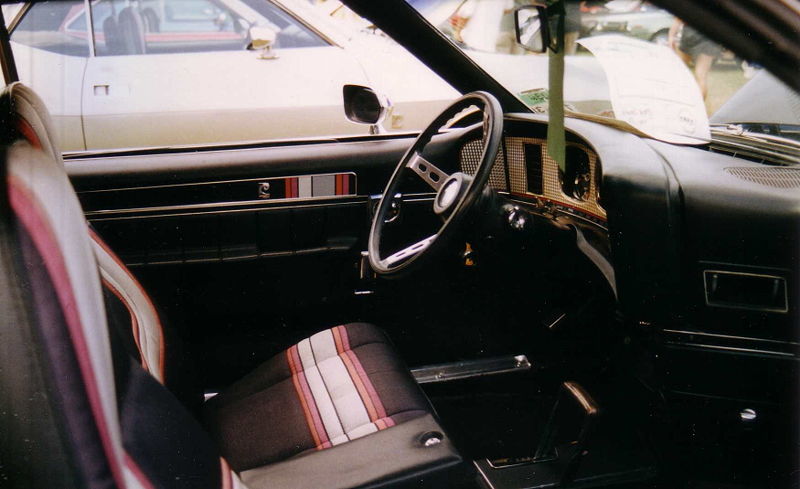
1972 AMC Javelin interior, Source | Car Gurus
1972
The 1972 model year Javelins featured a new "egg crate" front grille design with a similar pattern repeated on the chrome overlay over the full-width taillights. The AMX version continued with the flush grille. A total of 15 exterior colors were offered with optional side stripes.
To consolidate the product offering, reduce production costs, and offer more value to consumers, the 1972 AMC Javelins were equipped with more standard comfort and convenience items. Engine power ratings were downgraded to the more accurate Society of Automotive Engineers (SAE) net hp figures. Automatic transmissions were now the TorqueFlite units sourced from Chrysler, called "Torque-Command" by AMC. AMCs have a reputation for difficult parts availability, but the hodgepodge of vendors for AMC drivetrain parts sometimes works to the owner's/restorer's favor.
American Motors really struck gold in 1972 as record sales were reached, despite the declining pony car market, thanks to the focus on quality and the "Buyer Protection Plan" offered to back its products. This was the first time an automaker promised to repair anything wrong with the car (except for tires) for one year or 12,000 miles (19,000 km). Owners were provided with a toll-free telephone number to AMC, as well as a free loaner car if a repair to their car took more than a day.
The 1972 and 1973 model years got a makeover on interior too when fashion designer Pierre Cardin stepped in. His design had multicolored pleated stripes in red, plum, white, and silver on a black background.

1974 AMC Javelin AMX, Source | All American Classic Cars
Not so great year
In 1974, many other pony car manufacturers were reducing and replacing their pony car models as the trend was even more on the decline and the AMX suffered to its competitors: Camaro, Firebird, and the downsized Mustang II. Javelin production meanwhile reached a second-generation high of 27,696 units. Out of that total number, a total of 4,980 Javelin-AMX models were produced for the final model year.
Throughout this generation, and some of the previous, the Javelin did pretty well in international markets, most notably Germany, Australia, and Mexico. Unfortunately, 1974, would be the Javelin's—and hence the Javelin AMX's – last.
Join the club
Scarcity along with performance equals collectibility, and since Javelins were outsold by GM, Ford and Chrysler products by thousands of units, that makes them pretty scarce.
Even though this vehicle has been nixed in the market, it's at the top of the collector list and considered "highly prized." The Chicago Sun-Times auto editor Dan Jedlicka wrote that the Javelin, which he describes as "beautifully sculpted" and "one of the best-looking cars of the 1960s", is "finally gaining the respect of collectors, along with higher prices."
The book Keith Martin's Guide to Car Collecting describes the cars as providing "style, power, nostalgia, and fun by venturing off the beaten path... these overlooked cars offer great value" and includes the 1971-1974 Javelins as one of "nine muscle car sleepers."
Did you own or covet a Javelin? Tell us about it in the comments.




